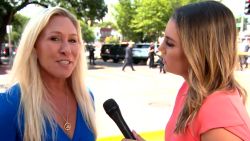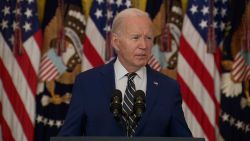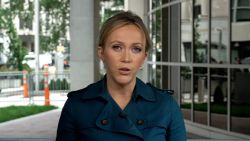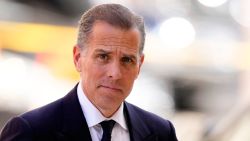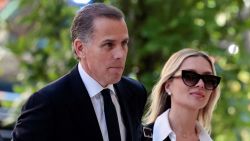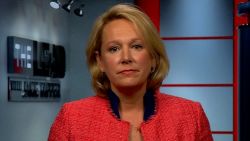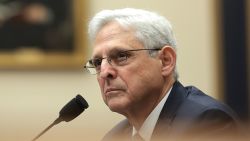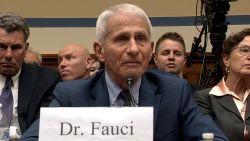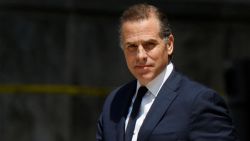It turns out, according to The Washington Post, that President Donald Trump himself drew the black mark over Alabama on that blown-up poster board hurricane map that he showed off in the Oval Office. But Trump has been using permanent ink all over the government for years.
He started off his administration leaving his aides, like former press secretary Sean Spicer, to do the spinning on things like crowd size. Now he does it himself, constantly.
In the past few weeks he’s invented a personal relationship between his wife and North Korean dictator Kim Jong Un, moved markets with reports of high-level trade talks that didn’t happen and generally continued his habit of inflating or deflating things to make what comes out of his mouth – hurricane, trade talks, whatever – seem correct.
The day after he shared the Sharpie-doctored hurricane map to justify his belated suggestion that Hurricane Dorian was headed for Alabama, Trump tried to spin the state of the US economy, which has emerged as his chief concern heading into the 2020 campaign. “Really Good Jobs Numbers!” he tweeted on Thursday.
It later turned out the economy added 130,000 jobs – slightly less than expected, despite the Census adding 25,000 temporary positions to the total. The President responded by once again attacking his Federal Reserve chairman Jerome Powell, demeaning the longtime Washington policy expert and investment banker and blaming him for doing too little to juice the US economy. “Where did I find this guy Jerome?” the President asked rhetorically on Twitter. (Answer: Treasury Secretary Steven Mnuchin recommended him.)
On Thursday, it looked like Trump was spilling the beans on the official government jobs report scheduled to come out Friday, though the White House later insisted he was talking about other, already-public numbers. It wasn’t the first time. He did something similar in 2018.
It’s actually an insidious example of his assault on fact, which divides the country into people who believe him, people who don’t and everyone else who has stopped paying attention.
More than ever, the White House is part “Veep,” in which an endlessly replaceable cast of aides who have replaced the original cast of seasoned public servants – guys like Gen. James Mattis – scamper around to placate the principal actor, like acting Homeland Security Secretary Kevin McAleenan did when he shot up to hand Trump that map in the Oval Office.
It’s also part “1984,” because when nothing Trump says can be wrong, 2+2=5. No matter what happened with the jobs numbers Friday, we already knew Trump would say they’re good.
Industries not yet saved
But details are important things, and economic forecasters have plenty that is concerning them about a potential economic slowdown and whether it will spread like a virus from China and Europe. Federal Reserve economists said Wednesday that trade policy uncertainty (ahem, Trump’s trade war) may have cost the US 1% of gross domestic product growth.
The unemployment rate remains near historic lows, but the manufacturing jobs Trump promised to return to the Rust Belt have not followed as quickly enough as many people in those states, which were key to Trump’s victory in 2016, would like.
Despite Trump’s persistent boast that he saved the coal industry, the president of the United Mine Workers of America said Wednesday that that’s just not right.
“Coal’s not back. Nobody saved the coal industry,” Cecil Roberts said at an event in Washington.
As CNN Business recently reported, despite Trump’s boast that he personally revived the US steel industry with tariffs, recent layoffs by US Steel and other Rust Belt companies suggest a possible decline in that industry.
There are similarly signs of weakness in the manufacturing sector he promised his trade war would revitalize.
As CNN’s Cristina Alesci reported this week, the top-line measure for US factory activity (aka ISM Purchasing Managers Index) contracted in August for the first time in three years.
That’s most distressing to some economic forecasters because it could portend a recession and suggest a possible contraction of US manufacturing.
“Never a good sign when there are warning signs of a contraction in the factory sector,” said Alliance for American Manufacturing President Scott Paul.
Counting on a trade deal
Trump likes to talk about how desperate China is for a trade deal with the US, but he appears equally at the mercy of the Chinese.
He spun up investors last week when he said the US and China would resume trade talks, although aides had to quietly walk his claim back. That left China to announce the actual resumption of talks in October, a development confirmed by Trump’s trade representatives, which sent markets up Thursday.
While Trump does not seem likely to blink with his combative policies of tariffs anytime soon, the administration clearly wants to appear responsive to the economic slowdown. His top trade adviser, Peter Navarro, said on CNN last week that what’s holding the US back has nothing to do with Trump, but rather with Congress’ inability to pass the President’s NAFTA update and the Fed’s resistance to further cutting interest rates.
But for those things and with more active efforts by Germany, China and Japan to stimulate their economies, the US would achieve the 3% annualized GDP growth he and Trump have long predicted and the stock market would hit 30,000 to boot, according to Navarro.
Trump’s other forecasts and facts
The Sharpied map wasn’t the only incorrect or odd interpretation of facts Trump made this week. CNN’s Daniel Dale fact-checks Trump on a weekly basis, so keep an eye out for that, but the President made these claims in the span of one interaction with reporters:
- He said things that are merely debatable, like his insistence that if he hadn’t started his trade war with China, the stock market would be 10,000 points higher or his claim that he had single-handedly stopped China from becoming a bigger economy than the US.
- He said things that are outright untrue, like his promise that US farmers affected by the hurricane could be given succor from money the US government has brought in from his tariffs on China, a mischaracterization of how the federal treasury works and an inflation of how much money the tariffs have brought into the treasury. Regardless, many economists say it’s American consumers who pay for tariffs.
- He said things that are outright provocative, like when he suggested his administration has neutralized the threat from Iran, although many would argue they helped intensify it by withdrawing from the Iran nuclear deal.
- He pooh-poohed California’s fuel economy standards because, he said, cars there “won’t be as good,” which ignores the fact that California’s standards will likely become the national standards he rolled back.
He did not mention the climate crisis with regard to either fuel efficiency or the intensity of hurricanes. And his systematic erasing of the term climate change from the federal government may ultimately be the most lasting diversion from fact of his presidency.
Forecasters use science, historical data and statistical modeling to predict things that humans cannot control but affect everyone, like hurricanes and the economy. The President uses his salesman bluster and bravado, trying to impose his will on events around him that he can’t seem to control.
Trump showed this week that he cares more about whether he was right or wrong than where the hurricane is headed – and he wants people to believe he did the best for them on the economy, even when they can see for themselves that they’re paying the price.



